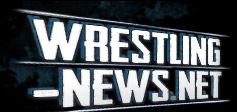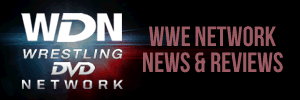In an interview with Alfonso Castillo of NewsDay.com, WWE’s Paul Heyman commented on the release of the Ladies and Gentlemen: My Name is Paul Heyman WWE DVD release, TNA Wrestling using ECW in recent times for nostalgic pops, his off-air comments to the WWE RAW crowd in 2001 and much more.
Highlights of the interview are below:
CASTILLO: I imagine a couple years ago, even you wouldn’t have thought WWE would be releasing a DVD about you. Whether it’s true or not, there’s at least a perception that, storylines aside, the McMahons over the years have not been the biggest Paul Heyman fans. So what does it say that they put this much time, effort and resources into releasing a DVD about you?
HEYMAN: I look at it from many different perspectives. Number one, I don’t think I ever had any bigger advocate, besides my father, than Vince McMahon during the 1990s. There’s a story that is recounted on the documentary. I was sitting in the office with Steven Chau in 2000, who was the president of the USA Network reporting directly to Barry Diller. This was at the time when WWE was in federal court in order to jump to Viacom off of USA Network. And USA was looking to fill the programming slot, and ECW was the frontrunner for that option at the time. And during the meeting, Steven Chau showed me a printed-out email that he had received the night before from Vince McMahon that said, “If your network doesn’t do business with ECW and, more specifically, with Paul Heyman, you will be depriving your network of a great resource and your viewers of guaranteed great programming.” And Vince had no reason to do that except it’s what he felt at the time. He felt ECW was a great shop for the industry in terms of developing talent. So I can’t tell you that I’ve spent my life butting heads with the McMahons. I’ve had my ups and downs with them, as anybody else in my position would. I would not have guessed three or four years ago that a documentary on my career would have been released by WWE. But I wouldn’t have guessed three or four years ago that I would have been back in WWE.
CASTILLO: Us being a Long Island news organization, I’d be remiss if I didn’t go over this again: That time at the Nassau Coliseum where you ended up chewing out the fans. (Heyman was on commentary during the Nov. 5, 2001 episode of “Raw” and, during a commercial break, got on the microphone and lashed out at fans for not being enthusiastic throughout the night.) Being a little older and a little wiser, do you think you handled that the right way?
HEYMAN: I called them “the worst audience we ever performed in front of,” and said “We shouldn’t ever tape television here.” I’m fine with it. It was a reaction for the moment. They were a lousy crowd that night. Here’s the funny thing: Nothing drives a performance like an audience that gives back, and even takes over. ECW was a product that will be remembered as much, if not more, for its audience interaction as for the things that happened in the ring. The WWE Superstars look forward to every time they see Chicago on the schedule. We spend a year building toward WrestleMania, and the number-two thing everybody looks forward to is the “Raw” the day after WrestleMania, because it’s the wildest crowd of the year. I’m from New York and I go to Chicago or the day after WrestleMania and see these wild crowds, and as a New Yorker, you want to say, “If this was in New York it would be even better.” And you think about the legendary crowds at Madison Square Garden. So we bring a live, worldwide TV show, not to the Garden, but to the Nassau Coliseum, and the crowd is just sitting there with their thumbs up their tuckuses. It’s like, “Hey, we’re all New Yorkers and you’re making New York look bad. Get up off your butt and make this show. And if you don’t like the show, take over. Boo the show. Vociferously and energetically and passionately boo us out of the building. But don’t just sit there.” The opposite of loving the product isn’t hating the product. It’s apathy. And it makes for terrible television. Why is John Cena the biggest star in the industry? Because, whether you love him or you hate him, you’re at the top of your lungs about him.
CASTILLO: You brought up ECW. At one of those TNA tapings recently at the Manhattan Center it was, again, another ECW revival. It was Tazz and Rhino, and everyone was talking about ECW and soliciting “ECW” chants from the crowd. There ended up being a back-and-forth between Tazz and Wade Keller of the Pro Wrestling Torch about how relevant this is anymore. Is it time to move on? When you see that kind of thing — the umpteenth ECW revival — is it heartwarming for you know that there’s still that passion for something you helped create? Or do you also think it’s kind of time to move on?
HEYMAN: I think it’s very much time for anybody and everybody to move on, especially on a product that you’re trying to push forward. Nostalgia tours are great, but not in a youth oriented and dominated industry. I think the lesson learned in all this is that Spike TV didn’t renew them. And one of the reasons has to be that the most passionate reaction they can get is for a product that went away in 2001. And they’ve been trying to brand themselves since their inception and they can’t get it done. They should have spent that time and energy trying to brand themselves and not trying to elicit a response of an audience based on a product that they don’t even own.
The interview is available in full at this link.









